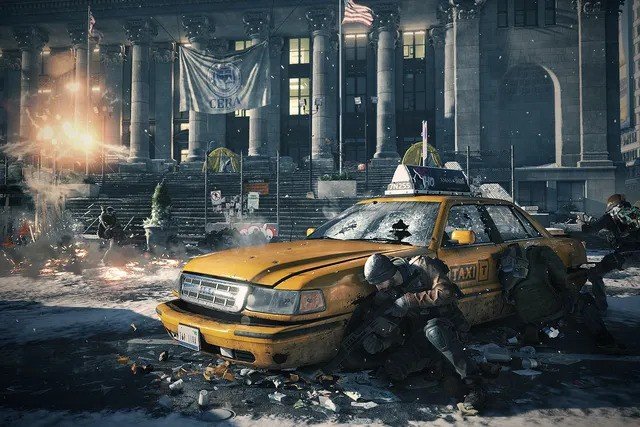
The Division Killing Virtual Enemies Just Outside My Office
A few hundred mornings of walking east on 36th Street passed uneventfully until one day I found myself in a virtual shootout. The scene: a grim version of New York City from The Division, where a simple act of self-defense—an exchange of gunfire—left me scavenging a fallen enemy for supplies, just as the game prescribes.
The Division, Ubisoft’s latest foray into tactical shooters, is set in a strikingly realistic model of Midtown Manhattan. Originally, the game was slated to feature Dumbo, Brooklyn, but it eventually shifted to more familiar territory—specifically, the area where I spent three years working.
Having obliterated countless video game foes over the years, I was curious about whether killing a virtual character in a recreation of my lunch spot would feel any different.
A Glimpse into My Old Commute
Though I’ve since relocated to Austin, Texas, I spent from 2013 to 2015 commuting through New York daily. My routine involved grabbing coffee in the West Village, strolling up 8th Avenue, passing landmarks like the post office on 31st and Madison Square Garden. At 36th Street, I’d turn right towards 6th Avenue, eventually arriving at Vox Media’s headquarters. This path became so automatic that I often played mobile games while navigating it.
In The Division, this route has been repurposed into a chaotic battlefield. The game begins at the post office—now a hub for a makeshift team fighting a devastating disease. The area has become a no-go zone, populated by gangs and a setting for high-stakes loot collection. Interestingly, this digital version of my old commute has been transformed into a war zone, with my former office just a short distance away from my first in-game kill.
The Authenticity of Digital Destruction
The creators of The Division likely didn’t design my old commute as a shooting gallery, though given my past experience as an accidental NPC in a Ubisoft game, it’s a humorous thought. From the federal building east of The Garden to the quarantined zones, the game’s depiction of Midtown Manhattan is both strikingly realistic and eerily familiar.
The game’s portrayal of post-outbreak Manhattan is so accurate that it mirrors the city’s real-life grime. On days when snow accumulates too high for trash trucks to operate, the city transforms into an apocalyptic scene with trash piles forming makeshift barricades. In The Division, these trash piles provide cover during shootouts, paying homage to the real-life detritus of the city.
The Emotional Impact of Virtual Violence
In recent years, my tolerance for virtual gore has diminished. While I once reveled in violent video games, the realism of lifelike figures bleeding and dying now leaves me uneasy. My experience with The Division was no different; the visceral realism of shooting virtual enemies in a realistic New York setting made me question my enjoyment of such violence.
This week, I attempted to play Dying Light, a zombie game praised for its detailed dismemberment mechanics. Despite its acclaim, I struggled with the game’s graphic content, similar to how I found The Division’s violence unsettling.
The Division offers a uniquely immersive experience, akin to virtual New York tourism. Its realism is so precise that deviations from the real city, like the incorrect placement of a barbecue restaurant or missing gas stations, became surprisingly bothersome. Yet, despite my discomfort with the game’s depiction of violence, I find myself drawn to the thrill of engaging with other players in this digital battleground.
I’m curious if others share this paradoxical experience with video game violence. Do you have limits to what you can tolerate in games? How do your boundaries shift over time? Let’s discuss in the comments.
The Division will be available on March 8th for PC, Xbox One, and PlayStation 4. These impressions come from a recent beta.





